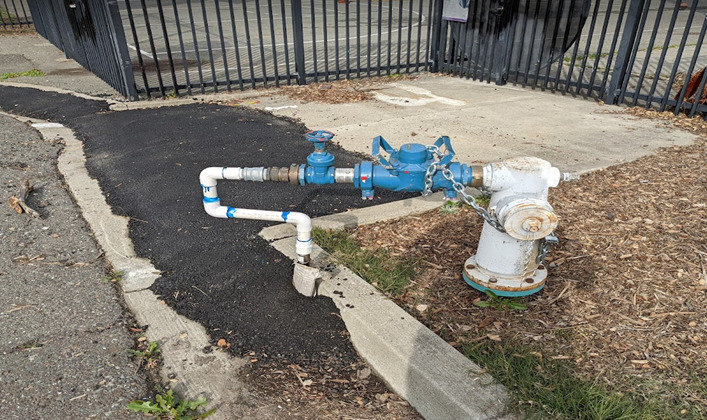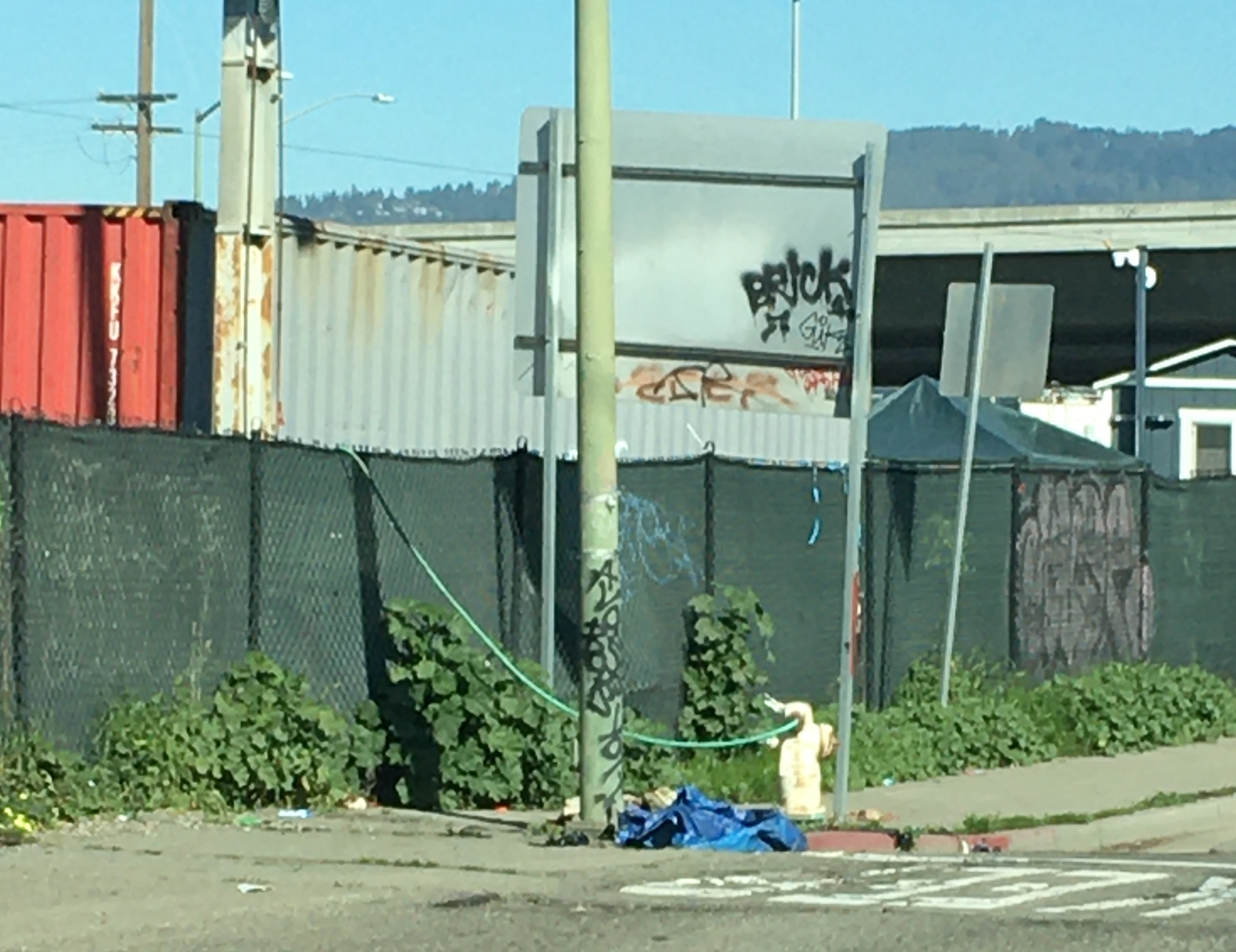Be the Water Boy (or Girl!) for Your NeighborhoodEast Oakland Collective’s EBMUD hydrant meter is ready for action
This post is part of a series, Water Boy.
Natalie Orenstein, housing and homelessness beat writer for The Oaklandside, published a story on hydrant meter access program for providing safe drinking water to the homeless. The story includes quotes from camp residents, an improvised tutorial, and shocking photos of me in a boilersuit.
Special thanks to Natalie and Amir Aziz, photographer, for joining Candice Elder of EOC, and Andrew Lee of EBMUD, and I out at the camp. Extra special thanks to all our donors and volunteers who made the project possible in the first place.
Reach Out
Anyone in the East Bay can reach out to me to check out the meter to serve camps anywhere in the EBMUD’s service district. If you can safely lift 30 pounds, you can learn to work a hydrant in about fifteen minutes.
If you don’t live in the East Bay, but would like to talk about our experience working with the water utility or the equipment, don’t hesitate to reach out. I’d be more than happy to share tips and our experience.
In Other Good News
Last week, I also heard through EBMUD that, unbeknownst to me, another group has already taken advantage of the program we pioneered. There’s a second hydrant meter for the homeless in town, and it belongs to…The City of Oakland!
EBMUD has also allowed that meter to stay connected to a hydrant—chained to it, in fact—to feed water to the newly built water system for a city-sanctioned camp. The water stays on 24/7. The city pays the bill.

Everyone I’ve mentioned this to—unhoused people, advocates, and fellow volunteers—agrees. This is the way water should work for homeless camps in Oakland.
If EBMUD has to count and charge for water, as required by law, then we use meters. If the way to connect the camps to the water system is fire hydrants, we do those connections right.
Harm Reduction
When we bring a meter to a camp, we can also bring all the tools and best practices to keep the water and the water system safe. Otherwise, people are going to improvize. They have to. And they are unlikely to guess it all right.
This is how we end up with situations like the monkey wrench in the Oaklandside tutorial video. This is how we end up with direct connections via simple adapters, without any protection against backflow contamination into the system:

We can talk about the risk these hack jobs pose to the water system. But we can’t look down on them. They’re exactly what we would do in that situation, assuming we’re handy enough.
Those of us in a position to do better should. And it turns out we can. Water is just part of the puzzle, and a stopgap at that. But East Oakland Collective and EBMUD found a way.
Your thoughts and feedback are always welcome by e-mail.
